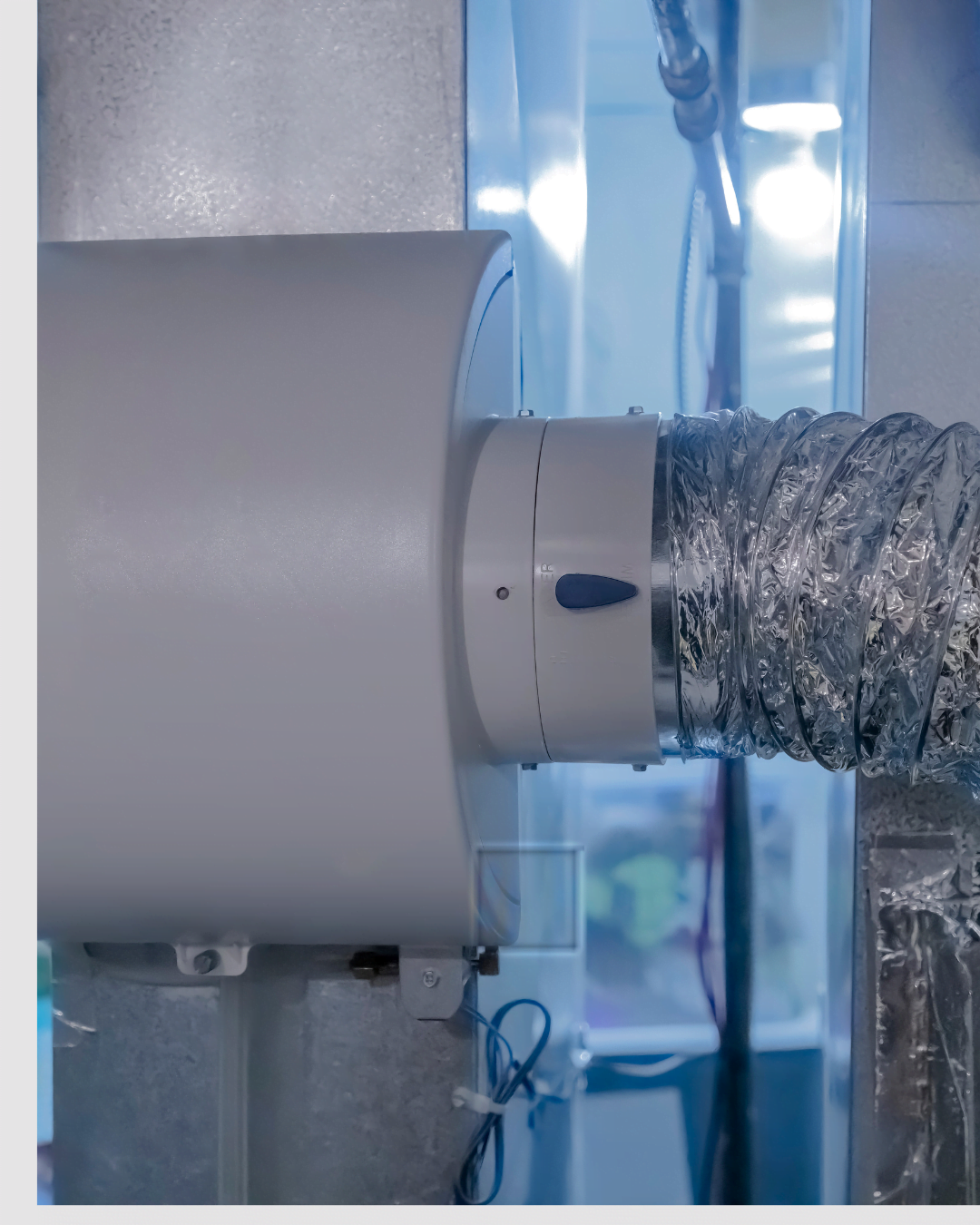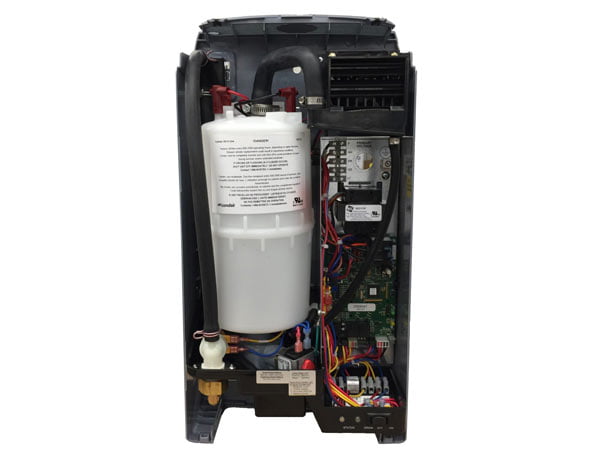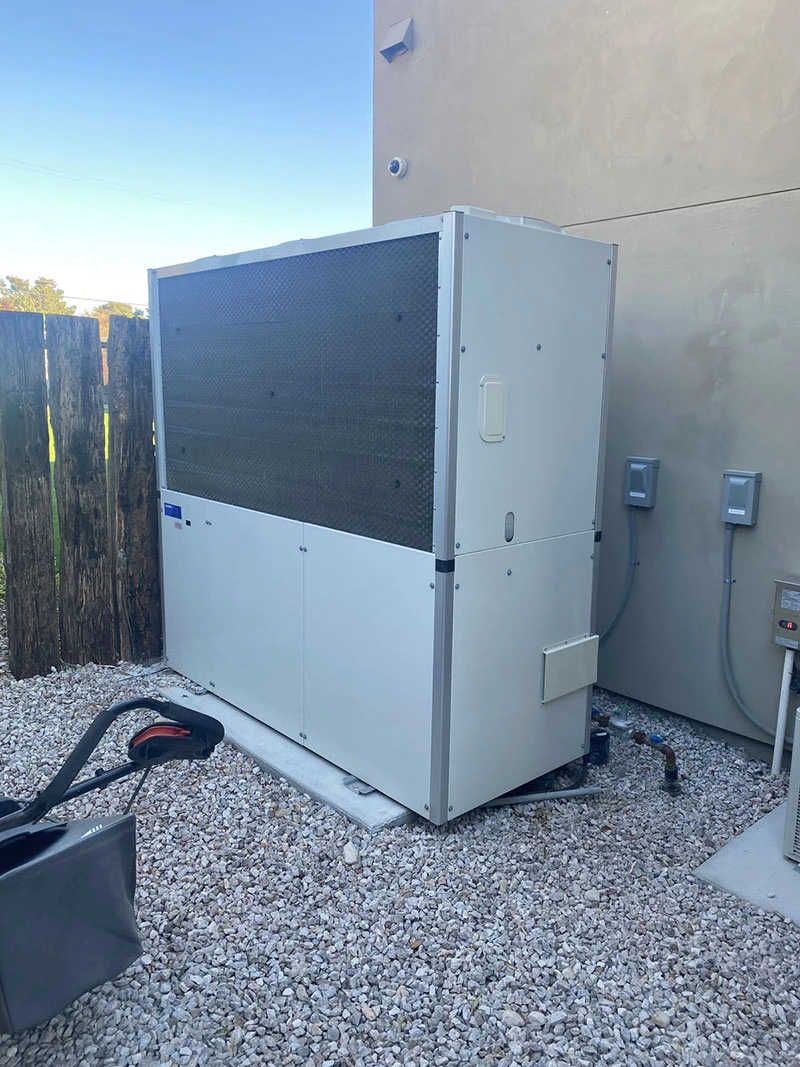Humidifiers
The Importance of Humidifiers in Las Vegas Air Conditioner Repair Services Schedule Now

Humidifiers
In the arid climate of Las Vegas, maintaining indoor comfort can be a challenge, especially during the scorching summer months. While air conditioning systems are essential for keeping us cool, they can also strip the air of moisture, leading to discomfort and potential health issues. This is where the role of Humidifier Las Vegas air conditioner repair services becomes crucial.
The Importance of Humidifiers in Las Vegas Air Conditioner Repair Services
In the arid climate of Las Vegas, where humidity levels frequently plummet to single digits, combating dryness and promoting comfort becomes crucial. While air conditioners effectively cool the indoor environment, they inadvertently dehumidify the air, resulting in dry skin, irritated nasal passages, and respiratory issues. To address this concern, integrating humidifiers into air conditioner repair services becomes paramount. By doing so, the moisture levels in the air can be harmonized, significantly enhancing the overall comfort of indoor spaces. Humidifiers play a vital role in infusing moisture into the air, effectively alleviating dryness and mitigating the discomfort associated with excessively dry air.
Protecting Health and Wellness :
Low humidity levels can have adverse effects on our health. Dry air can exacerbate respiratory conditions such as asthma, allergies, and sinusitis, making individuals more susceptible to infections. Moreover, dry skin and eyes can become more prone to irritation and itching. By incorporating humidifiers into air conditioner repair services in Las Vegas, professional technicians can improve indoor air quality and reduce the risk of these health issues. Proper humidity levels help maintain healthy mucous membranes, minimize the spread of airborne viruses, and promote overall well-being.
Steam Humidifiers
Whole-House Electrode Steam Humidifiers are a cost-effective, long-term solution that can make a major difference in your health and comfort.
- Improved health benefits
- More comfort in colder months
- Better environment for wood floors, furnishings, plants
- Quiet, convenient, and efficient operation
Portable humidifiers may be good for a room or two yet are not practical for uniform whole-house humidification. Portable humidifier reservoirs need to be manually filled several times a day. The whole-house humidifier taps into your home’s waterline for a continuous water supply and utilizes your homes central heating system to evenly maintain the optimum humidity level throughout your home all winter long.
- The humidifier is one of the healthiest, most efficient, and lowest maintenance humidifiers available today.
- Unlike other humidifiers, there is no water reservoir that allow scale to build-up. Scale can be a breeding ground for microorganisms that can release into the air in your home. According to the Environmental Protection Agency (EPA) and the Consumer Product Safety Commission (CPSC). some types of humidifiers such as ultrasonic, impeller, and evaporative humidifiers can disperse microorganisms and minerals, from their water tanks into indoor air unless they are cleaned regularly.
- Maintenance is a breeze with this whole-house humidifier and the replaceable cylinder design. There’s no messy clean-up of slimy, stale water in a reservoir. The whole-house humidifier collects scale and minerals in its cylinder that is replaced annually, or semi-annually, depending on local water conditions.

Humidifiers
- Installation requires only a potable water supply, water drainage and 110-240V power. The whole-house humidifier features a quiet drain valve and includes a flexible steam hose kit and stainless-steel steam distributor to put pure, atmospheric steam into the ductwork.
Features

Humidifiers
- Quiet drain valve for ultra-quiet operation
- Stainless-steel distributor for clean, sterile steam humidification.
- Self-generating electrode type steam humidifier producing atmospheric steam inside a plastic cylinder without the use of immersion type electric heating elements.
- Easy maintenance using disposable cylinders that typically last one to two years depending on water.
- Auto-adaptive technology adapts to changing water conditions.
- Automatic fill and drain cycles.
- Improves comfort and health.
- Reduces static electricity.
- Optional Temperature Sensor (duct or outdoor mount) reads outdoor temp and resets humidity control setpoint to prevent condensation on windows.
Improve Overall Health for Family and Home
- The whole-house humidifier electrode steam humidifier helps prevent colds, flu, sore throats, dry skin, frizzy hair, and other respiratory issues. Good humidity levels help control the spread of viruses and other micro-organisms.
- Wood floors, plaster, wallpaper, paint, furniture, musical instruments, and even electronics will perform better and last longer in a properly humidified environment.

Humidifiers
How it Works:
An electrode steam humidifier is an isothermal humidifier which generates electrons to heat water. The technology uses water’s conductivity for electrical resistance. The flow of electric current and the volume of steam generated is determined by the surface area of electrodes and their immersion depth. Electrodes with large surface areas provide a place for water hardeners to settle. The hardeners crystallize onto the electrodes and act as additional insulators. As the cylinder slowly fills with scale and minerals, the water level gradually rises to provide the necessary current consumption as electrode surface area gradually becomes smaller. When the cylinder is full, an indicator light on the unit will flash to indicate 72 hours of service life remaining and that it’s time to replace the cylinder.
All scale and mineral sediment is deposited into the cylinder which is easily changed and discarded. Cylinder replacement requires no special tools and can be done in a few minutes. A light on the unit indicates when the cylinder needs replacement. Installation requires only a potable water supply, water drainage and 110-240V power. Units can be mounted for direct room or duct distribution.

Humidifiers
Eco Friendly Air Can Control Your Climate

Humidifiers
ZONE CONTROL SYSTEMS
Eco Friendly Air Zones Control allows a heating & cooling system to connect to several thermostats placed throughout the home. This enables the homeowner more control over the temperature & comfort of the whole house. Zone control also makes it possible to reduce wasted energy used heating or cooling rooms that are not used.
Eco Friendly Air is your source for HVAC zone dampers, forced-air zone controls & HVAC zoning control system accessories. Eco Friendly Air zone controls is the best replacement for an older zoning controller OR upgrading to zoning for the first time. Eco friendly Air zone control can be used with virtually all standard equipment brands and it can replace most all of the major zoning brands (Honeywell, EWC, Zonefirst, Durozone, Robert Shaw, Zonex, Truezone, Ultrazone & many more). Simple installation and superior reliability make Eco Friendly Air the best zoning Installer for any job up to 20 Zone
Our Top Cooling and Heating Repair Las Vegas: Eco Friendly Air:
Conclusion :
In the dry climate of Las Vegas, air conditioner repair services that include Humidifier Las Vegas play a vital role in enhancing indoor comfort, preserving health, and protecting property. By finding the right balance of humidity, homeowners can enjoy a comfortable and healthy living environment, even during the hottest months of the year.
Use and Care of Home Humidifiers
- Empty the tank, wipe all surfaces dry, and refill the water in portable humidifiers daily to reduce any growth of microorganisms.
- Use water with low mineral content, such as distilled water, to prevent releasing minerals into the air.
- Clean portable humidifiers every third day to reduce the buildup of scale and microorganisms.
- If you use a cleaning or disinfecting agent to clean your humidifier, rinse the tank thoroughly to avoid releasing chemicals into the air.
A PDF version of this publication is available: Use and Care of Home Humidifiers (pdf) (2 MB, June 2022)
On this page:
- Introduction
- Types of Humidifiers and Associated Pollutants
- Recommendations for Use and Care
- Can I Use Tap Water in My Ultrasonic or Impeller Humidifier?
- Additional Sources of Information
On other pages:
Humidifiers are commonly used in homes to relieve the physical discomforts of dry nose, throat, lips, and skin. The moisture they add to dry air also helps alleviate common nuisances brought on by winter heating, such as static electricity, peeling wallpaper, and cracks in paint and furniture. However, excess moisture can encourage the growth of biological organisms in the home. These organisms include dust mites, which are microscopic animals that produce materials causing allergic reactions to household dust, and molds.
Several studies have shown that ultrasonic and impeller (or “cool mist”) humidifiers can disperse materials, such as microorganisms and minerals, from their water tanks into indoor air. Proper care and cleaning of ultrasonic and impeller humidifiers are important for reducing potential exposures to microorganisms, such as bacteria and molds. Microorganisms often grow in humidifiers which are equipped with tanks containing standing water. Breathing mist containing these pollutants has been implicated as causing a certain type of inflammation of the lungs.
Using water with lower mineral content will reduce exposures to these materials (see Can I Use Tap Water in My Ultrasonic or Impeller Humidifier?).
The young, the elderly, and those people with lung diseases or respiratory allergies may be particularly susceptible to certain types of airborne pollutants. However, if you follow the recommendations for the use and care of home humidifiers provided in this fact sheet, the potential for dispersal of microorganisms and minerals from your humidifier should be reduced.
Types of Humidifiers and Associated Pollutants
Console humidifiers are encased in cabinets which are designed for floor use.
Portable humidifiers are smaller and more readily moved.
Central humidifiers are built into heating and air conditioning systems, and humidify the whole house.
The two types of humidifiers which generally appear to produce the greatest dispersions of both microorganisms and minerals are:
- Ultrasonic, which create a cool mist by means of ultrasonic sound vibrations.
- Impeller, or “cool mist,” which produces a cool mist by means of a high-speed rotating disk.
Two additional types of humidifiers can allow for growth of microorganisms if they are equipped with a tank that holds standing water, but generally disperse less, if any, of these pollutants into the air. These are:
- Evaporative, which transmit moisture into the air invisibly by using a fan to blow air through a moistened absorbent material, such as a belt, wick, or filter.
- Steam vaporizer, which create steam by heating water with an electrical heating element or electrodes. “Warm mist” humidifiers are a type of steam vaporizer humidifier in which the steam is cooled before exiting the machine.
Note: Steam vaporizer and evaporative humidifiers are not expected to disperse substantial amounts of minerals.
Recommendations for Use and Care
It is important to use a humidifier only when conditions require it, to use the correct moisture setting for existing conditions, and to clean it thoroughly.
The possible health effects resulting from the dispersal of microorganisms and minerals by home humidifiers are not fully understood. Meanwhile, it may be prudent to reduce the potential for personal exposures to these materials by taking the following precautions, particularly when using ultrasonic and impeller humidifiers.
- Empty the tank, wipe all surfaces dry, and refill the water in portable humidifiers daily to reduce any growth of microorganisms; follow the manufacturer’s instructions for changing water in console humidifiers. Be sure you unplug the unit from the electrical socket first.
- Use water with low mineral content to prevent the build-up of scale and the dispersal of minerals into the air. See Can I Use Tap Water in My Ultrasonic or Impeller Humidifier? for information on using water with low mineral content.
- Clean portable humidifiers every third day. Empty the tank and use a brush or other scrubber to clean it. Remove any scale, deposits, or film that has formed on the sides of the tank or on interior surfaces, and wipe all surfaces dry. Again, be sure you unplug the unit.
Follow the manufacturer’s suggestions on the use of cleaning products or disinfectants. In the absence of specific recommendations, clean all surfaces coming in contact with water with a 3% solution of hydrogen peroxide. If you use any cleaning or disinfecting agent, rinse the tank thoroughly with several changes of tap water to prevent dispersal of chemicals into the air during use.
- Follow the manufacturer’s directions on cleaning and maintaining console and central (furnace mounted) humidifiers. In particular, if the humidifier contains a tank, do not allow water to stand in the tank for extended periods of time, and keep the water clean.
- Keep steam vaporizer humidifiers out of the reach of children. Steam and boiling water may cause burns.
- Do not humidify to indoor relative humidity levels exceeding 50 percent. Higher humidity levels may encourage the growth of biological organisms in the home. Hygrometers, available at local hardware stores, may be used to measure humidity levels. Some humidifiers contain a built-in humidistat which may be adjusted to the proper moisture level. If water condenses on windows, walls, or pictures, relocate the humidifier, lower its humidistat setting, or reduce its use.
- Do not permit the area around the humidifier to become damp or wet. If dampness occurs, turn the output volume of the humidifier down. If the humidifier output volume cannot be turned down, use the humidifier intermittently. Do not allow absorbent materials, such as carpeting, drapes, or tablecloths, to become damp.
- Follow the manufacturer’s instructions regarding the use, maintenance, and replacement of any materials supplied with the humidifier. Use appropriate materials as recommended by the product manufacturer.
- Clean the humidifier, as directed, at the end of the humidifying season or when the product will not be in frequent use. Before storage, make sure all the parts are dry. Dispose of all used demineralization cartridges, cassettes, or filters. Store the unit in a dry location. After storage, clean the unit again and remove any dust on the outside.
- Stop using your humidifier and contact your physician if you have respiratory symptoms which you believe are associated with periods of use of your home humidifier, even if you are following maintenance directions.
Can I Use Tap Water in My Ultrasonic or Impeller Humidifier?
Researchers have documented that ultrasonic or impeller humidifiers are very efficient at dispersing minerals in tap water into the air. In addition, some consumers are bothered by a “white dust” that may appear on surfaces during use of these devices. Most importantly, minerals in tap water may increase the development of crusty deposits, or scale, in humidifiers. Scale can be a breeding ground for microorganisms. Retarding the growth of scale is the most compelling reason to find alternatives to tap water. For this reason, or if white dust is a problem or you wish to minimize your exposure to minerals in the tap water as a matter of prudence, you should either:
- Use bottled water labeled “distilled.” While distilled water still contains some mineral content, it will likely contain lower mineral content than most tap water. Distillation is the most effective method for removing minerals from water.
Two additional demineralization processes, deionization and reverse osmosis, remove most of the minerals from water, but are generally less effective than distillation. Water demineralized by these two processes would, on the average, be expected to contain a higher mineral content than distilled waters. “Purified” water may be produced by any of these three or other similar processes.
Be aware, however, that not all bottled water is produced using demineralization processes. Bottled waters labeled “spring”, “artesian” or “mineral” have not been treated to remove mineral content.
- Consider using demineralization cartridges, cassettes, or filters if supplied or recommended for use with your humidifier.
Be aware, however, that the ability of these devices to remove minerals may vary widely. Further research is needed to determine how well, and how long, these devices work. Watch for the appearance of “white dust,” which would indicate that minerals are not being removed.
Also, in areas of the country where the mineral content in the tap water is high, using distilled water may be less expensive than cartridges, cassettes, or filters.
Climate Change and Indoor Environments
Climate change may worsen existing indoor environmental problems and indoor air quality, and it may also introduce new problems as the frequency or severity of adverse outdoor conditions change. Our homes and buildings, where we spend most of our time, provide protection between us and the outdoors. The design, construction, operation and maintenance of buildings can impact the air we breathe, our energy consumption, and our health. To protect all building occupants and maintain safe and healthy indoor environments, considerations for buildings should include occupant health and well being, sustainability, energy efficiency, and changing outdoor conditions.
Energy Efficiency and IAQ
Heating and cooling buildings uses a lot of energy — about 43 percent of all energy use in the United States. Producing this energy requires us to burn fossil fuels like coal and oil, which contributes to air pollution and generates large amounts of greenhouse gases that contribute to climate change.
Improving the energy efficiency of buildings usually involves tightening the buildings through air sealing and other weatherization techniques to reduce the escape of air that we have just spent money to heat or cool. That’s a very good thing. However, as buildings are renovated or repairs are made to save energy or increase comfort, indoor air quality problems can be created or exacerbated. Indoor pollutants like radon, mold, particles and chemicals from a variety of sources can build up to unhealthy levels unless pollutant sources, ventilation and moisture are carefully managed. Pollutants like tobacco smoke can easily migrate from one unit to another in multi-unit buildings, and lead and asbestos, which may be disturbed during renovations or retrofits, remain serious health risks in older buildings.
Protecting indoor air quality and occupant health while saving energy and money during building retrofits isn’t very hard to do, but it does require teamwork, planning and commitment from everyone involved in building upgrades. Most importantly, if we do it right, we’ll protect public health, reduce our reliance on fossil fuels and reduce climate change impacts all at the same time.
Frequently Asked Questions
Search Frequent Questions for immediate answers to the most common questions or send a question to our customer care team.
Air Cleaners
- What is a HEPA filter?
- What is a MERV rating?
- What guidelines are available to compare air cleaners?
- Will air cleaners reduce health risks?
- What are ionizers and other ozone generating air cleaners?
- Should you use an air cleaner?
- Does EPA certify/register or provide lists of acceptable air cleaners or manufacturers/sellers?
Air Duct Cleaning
- Should I have the air ducts in my home cleaned?
- What are volatile organic compounds (VOCs)?
- Does EPA regulate volatile organic compounds (VOCs) in household products?
Biological Pollutants
Carbon Monoxide
- What is carbon monoxide?
- Where should I place a carbon monoxide detector?
- What about carbon monoxide detectors?
- What is the average level of carbon monoxide in homes?
- What do I do if I suspect that combustion appliances are affecting my health?
- What are combustion products?
Secondhand Tobacco Smoke
- Who has the authority to ban or limit exposure to environmental tobacco smoke?
- What is EPA’s position on children’s exposure to environmental tobacco smoke?
- Is outdoor exposure to secondhand smoke comparable to indoors?
- How long do the harmful elements of secondhand smoke linger?
- What’s the difference between environmental tobacco smoke and secondhand smoke?
- Can EPA ban smoking or otherwise limit exposure to secondhand smoke?
- What can I do about secondhand smoke coming from my neighbor’s apartment?
Indoor Air Quality
- Who can I contact to have the indoor air quality tested at my place of employment?
- How much ventilation do I need in my home to improve indoor air quality?
- How does outdoor air enter a building?
- Has EPA issued specific recommendations on how frequently carpet should be cleaned?
- What can I do to improve indoor air quality in my home?
- How can I protect indoor air quality if I live in an apartment?
- How can I protect indoor air quality if I am remodeling my home?
Additional Sources of Information
For additional information on home humidifiers and other consumer products, contact the U.S. Consumer Product Safety Commission (CPSC) or see the CPSC Safety Alert Dirty Humidifiers May Cause Health Problems.











